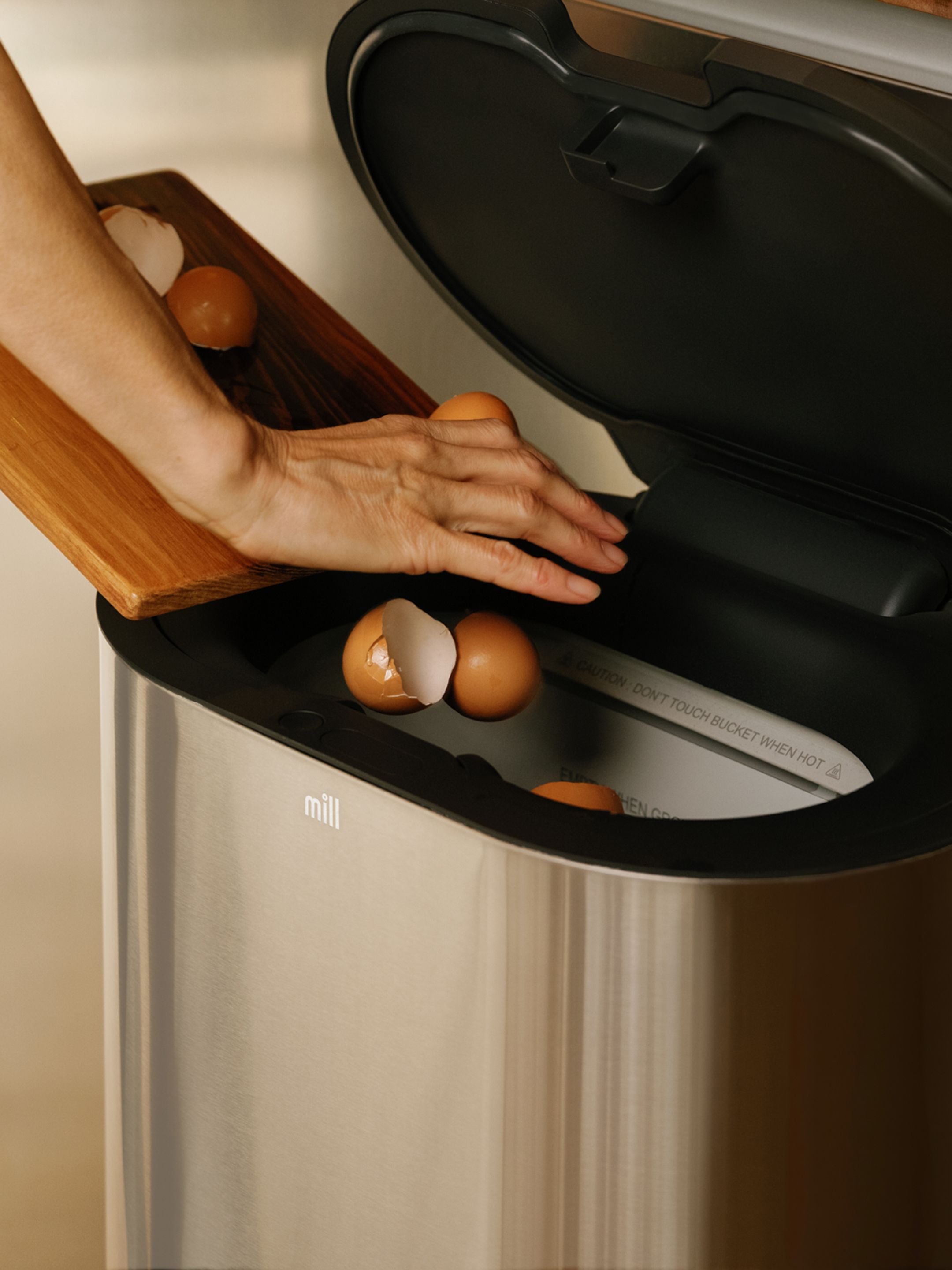
Unmatched capacity and power
Mill can handle anything from bones to pits. It takes weeks to fill for a family of four.
Wastes nothing. Goes with everything.
The odorless, effortless Mill food recycler turns your scraps into nutrient-rich grounds. Available in premium finishes to match any kitchen.
Starting at $999
5 / 5
2,000 Reviews
The most important machine in your kitchen goes to work once dinner’s over.

Mill can handle anything from bones to pits. It takes weeks to fill for a family of four.

Mill removes 99.9% of food scrap odors — plus dust and pollen from the air.

Simply drop in your food scraps. Mill works automatically, and quietly, on your schedule.

Mill dries and grinds food scraps, creating a resource for your garden — or community.

Use it every day for years to come. Mill is crafted by hand in North America.
Powerful tech. Intelligent design.
Developed by the engineer of the iPhone and the Nest Thermostat.
Here's a look under the hood.


Holds up to 12 lbs, heats to 212 °F for germ-free, shelf-stable grounds, and cleans easily.

Precision machined for optimal heat transfer. Industry-leading capacity for 12 lbs of food.

Customize your safety lock to keep out pets and small kids during runtime.

Keep track of your Mill’s smart cycles in real time.

Weight and moisture sensors inform custom algorithms for superior cycle efficiency.

Made from upcycled coconut fiber, it removes 99.9% of odor, and lasts a full year.

Track your impact precisely. Mill’s system can sense a single blueberry.

Mill’s brushless motor offers 120nm of torque, quiet operation, and near indestructibility.

Mill’s rolled metal exterior is both durable and beautifully designed.
Holds up to 12 lbs, heats to 212 °F for germ-free, shelf-stable grounds, and cleans easily.
Precision machined for optimal heat transfer. Industry-leading capacity for 12 lbs of food.
Customize your safety lock to keep out pets and small kids during runtime.
Keep track of your Mill’s smart cycles in real time.
Weight and moisture sensors inform custom algorithms for superior cycle efficiency.
Made from upcycled coconut fiber, it removes 99.9% of odor, and lasts a full year.
Track your impact precisely. Mill’s system can sense a single blueberry.
Mill’s brushless motor offers 120nm of torque, quiet operation, and near indestructibility.
Mill’s rolled metal exterior is both durable and beautifully designed.
Advanced odor filtration prevents all smells. And with no food in your garbage, that won’t smell either. Made from upcycled coconut shells, our replaceable filters last a full year.
Blocks 99.9%
of odors
Filter lasts
a year
Removes dust
and pollen
Smart sensors and adaptive algorithms tell your Mill when to run and for how long — even if you add food mid-cycle. It knows what you add, and works efficiently while you sleep.
Fully
automated
Energy
efficient
Custom
runtimes


Takes up to
4 weeks to fill
With a 6.5L capacity, Mill can process 40 lbs of food scraps — even bones and pits. And since it reduces volume by 80%, you’ll only have to empty it about once a month.
6.5l
capacity
80% volume
reduction
Takes almost
anything
Made to match your style







Mill transforms your food scraps into nutrient-rich grounds that can nourish your garden, your backyard chickens, or small, independent farms.






The wonderful feeling of wasting nothing
Ask anyone who’s lived with it: Mill makes you feel good. Because you’re not putting garbage into the world. Because your home smells clean. Because you’re not wasting food — or time.

“It feels like we are part of the solution”







Delivered to your door step
Try Mill at home for 90 days and return for free
Your peace of mind with free replacements
Trusted reviews by

